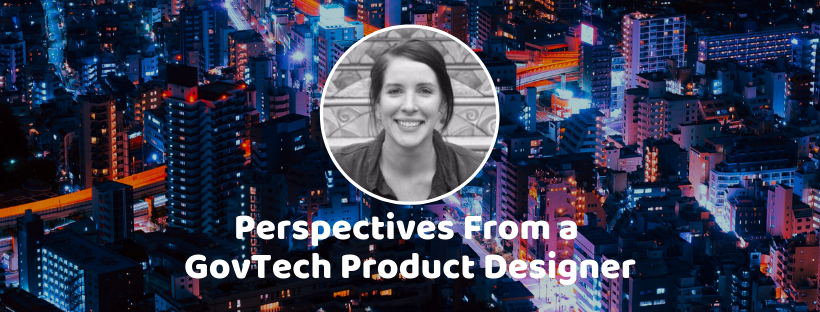
This guest blog is by ELGL member Justine Triola. Justine is UrbanLeap’s first employee and Product Designer. She’s passionate about applying her background in design and anthropology to solving problems in urban innovation.
When it comes to software products, government is known to get stuck with products of a poor-quality experience for high price points. There’s a belief that platforms built for government don’t need to have a quality experience because government employees are “used to inferior software”.
However, times are changing and government employees not only expect quality products and experiences similar to what they experience in consumer products, but need quality products to help them tackle some of their most challenging problems yet.
We’ve interviewed our product designer who told us why she’s passionate about building world-class products, modern user experiences, and solving complex problems where it matters the most; in the public sector.
What are you designing?
Justine Triola: We provide local governments with a platform to discover, test, and share new solutions. Governments are increasingly taking a new approach to solving problems by testing solutions (e.g. “piloting” or “public prototyping”) before procuring them.
We believe that this new approach is a more effective way than traditional procurement in minimizing the risks of adopting new solutions. So, our objective is to support and encourage the rising trend in agile processes by providing the means to carry out those initiatives in a more organized, transparent, collaborative, and faster way.
What draws you to this problem?
JT: The opportunity to design a product for people whose work directly impacts the future of our public communities is deeply appealing. They’re faced with challenges that others would turn a blind eye to and constraints that come with the territory of a career in government.
One of those constraints is an antiquated procurement process that impedes their ability to address pressing issues promptly and unique issues in innovative ways. I think there’s a huge opportunity to be the catalyst for change. I see an attainable, near-future state in which local governments can innovate more rapidly, collaboratively, and effectively.
From my perspective, three big things stand in the way:
(1) culture,
(2) bureaucracy, and
(3) tools.
The bureaucratic obstacle is certainly a work-in-progress, but we did see our governor take a bold step towards change this month. Culture appears to be shifting, and we can help by providing the space for community building through the sharing of best practices and learnings.
And the latter is something software is evidently good at handling. Removing those barriers to success so that local governments can have the breathing room to really solve some of their toughest, deepest, and most unique challenges around innovation—that’s why I’m here.
What’s challenging about designing for local governments and innovation?
JT: We’re designing for a process that involves many different stakeholders:
(1) CIOs, department heads, and project managers who have complex needs around processes, transparency, and data-driven decision-making,
(2) vendors and entrepreneurs who need a reliable way to demonstrate their solution, and yet
(3) at the end of the day it’s the residents who really need to benefit from our product.
The diversity of our audience (now international) and the complexity of the challenges our customers are trying to tackle have a direct impact on the design as well.
I need to consider a wide range of use cases from small, internal, process-oriented pilots, to large, technology-oriented pilots with multiple vendors—in addition to pilots that range in length from a few days to a few years.
What about your work makes you proud?
JT: A year ago we didn’t have a product, and today we have eight amazing government partners. Designing and building a product in a new market from the ground up is a monumental task.
No one has ever nailed down the answer on day one, but we’ve worked closely with our customers—driving and flying long distances to meet them and including them in the design process—to really understand their needs and evolve the product.
I’m proud to say that right now we’re working on a new dashboard that will look vastly different from the first prototype we built because we invested time into incorporating feedback from our customers.
What is your next big challenge at UrbanLeap?
JT: Our next big challenge is connecting government partners and their ideas and learnings to build Communities dedicated to learning from and building off of each other through our platform.
We’ll need to design for an intricate web of needs and desires around sharing data, security, and cooperative alliances. It’ll be a crucial time for us to keep customers in the feedback loop in order to deliver the solution and experience they need.
About UrbanLeap
- Are you a CINO or leading initiatives in government innovation? We build tools for you!
- Are you a software engineer or sales leader interested in solving some of the most difficult product problems facing startups today? We’re hiring!
